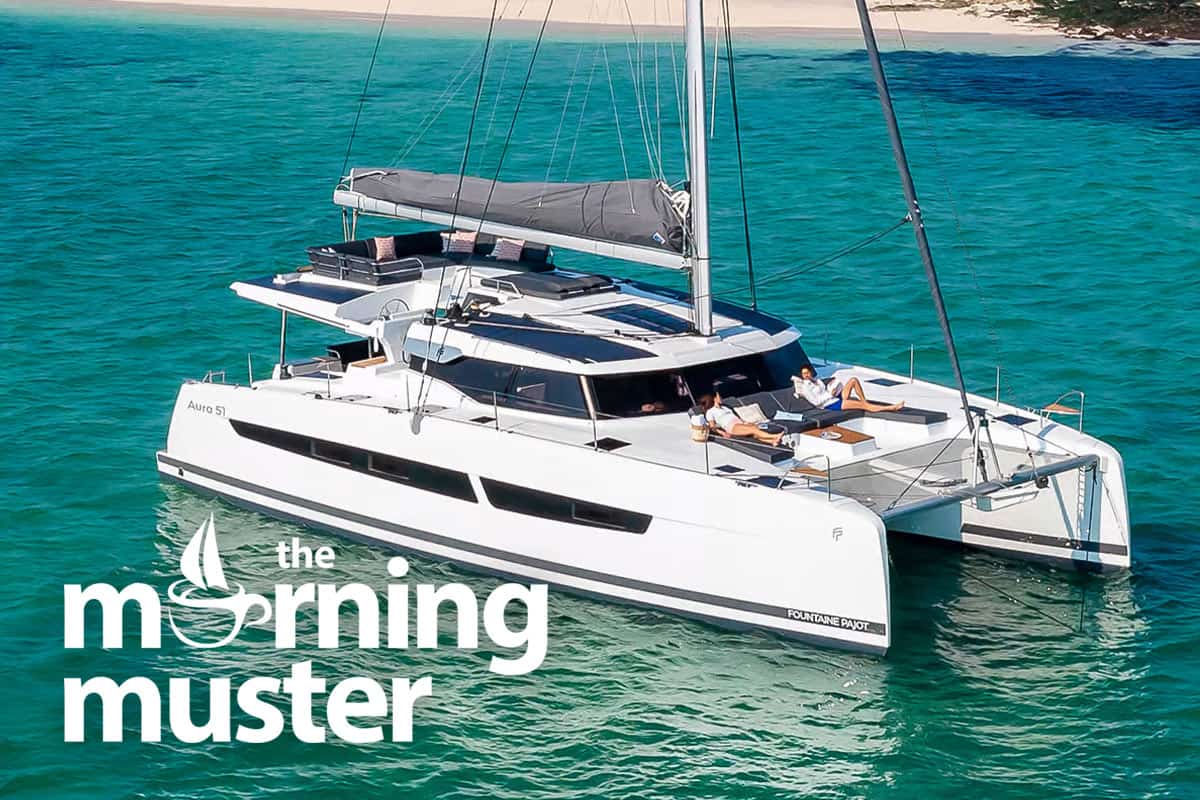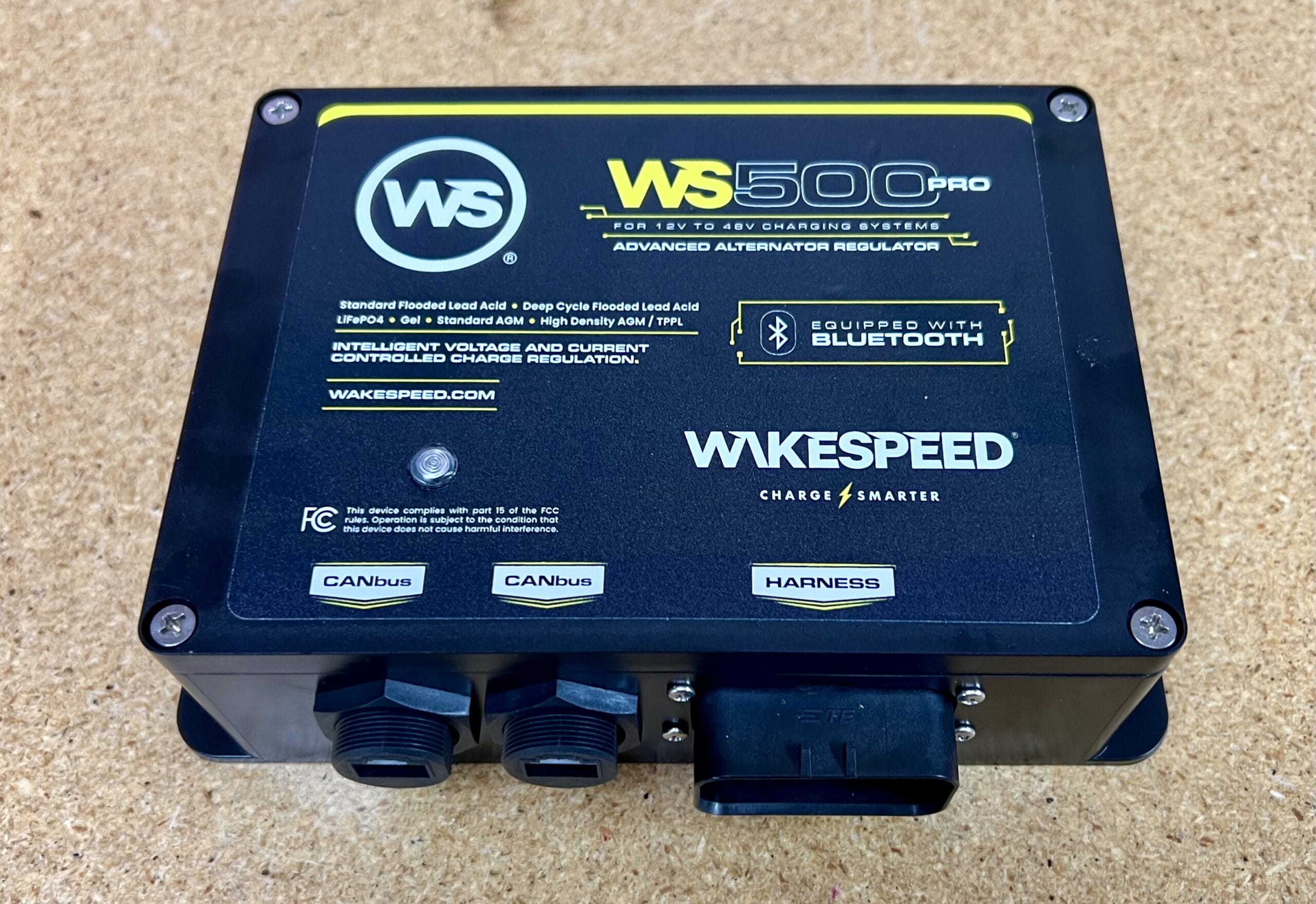
Tips, Tricks & Thoughts:
Tips
-
Ideal Cruising Boat Size Podcast
5 CommentsReading Time: < 1 minuteFreeRead more: Ideal Cruising Boat Size PodcastAfter reading my When Is A Cruising Sailboat Too Big? chapter in our How To Buy a Cruising Boat Online Book, Ben and Teresa, of Morse Alpha Expeditions, suggested we do a podcast on the subject together, so we did. And to make this much more relevant, Kim Stephens, who is, along with her husband […]
-
Don’t Rely On Crotch Straps For Tether Arrest
10 CommentsReading Time: 2 minutesFreeRead more: Don’t Rely On Crotch Straps For Tether ArrestThis Tip was originally part of a larger article that we just deleted because it’s out of date—we do that a lot—but this part is still valid and important.
-
Cruising Sails—Two Cloth Fibres To Avoid
10 CommentsReading Time: 3 minutesMembersRead more: Cruising Sails—Two Cloth Fibres To AvoidSince I have recommended sailcloth made from high-modulus (low-stretch) fibres for cruising boats, I’m thinking I should expand on that to avoid confusion. Let’s do that: Back around the end of the time I was sailmaking, a new sailcloth burst on the scene that promised to pretty much banish shape-robbing stretch. It was made from […]
-
My Favourite Cruising Sailcloth
48 CommentsReading Time: 3 minutesMembersRead more: My Favourite Cruising SailclothStill looking pretty much as-new with the shape in the right place and a nice clean run off the leach after 12 years and about 25,000 miles. Note that I should have eased the outhaul a bit in these conditions and the bottom batten is in the pocket too tight (adjustable). The combination of these […]
-
Ocean Signal MOB2 AIS Crew Overboard Beacon Review
19 CommentsReading Time: 3 minutesFreeRead more: Ocean Signal MOB2 AIS Crew Overboard Beacon ReviewPhyllis and I have long been fans, and early adopters of, AIS/DSC crew overboard (COB) beacons and we both wear one at all times when sailing, even inshore and in benign conditions. We also completely changed our person overboard recovery strategy to rely on the AIS beacons—definitely all-in on this technology. And, further, the several […]
-
Sails—Cross-Cut or Radial?
27 CommentsReading Time: 2 minutesMembersRead more: Sails—Cross-Cut or Radial?This bi-radial genoa is old, but even so the shape is still pretty decent with a nice entry and good run off the leach. It would probably be even better if it was full tri-radial. A question from a reader made me realize that we have some gaps in our sail recommendations that will be […]
-
Wakespeed WS500 Pro, Shipping
0 CommentsReading Time: < 1 minuteFreeRead more: Wakespeed WS500 Pro, ShippingAl Thomason, co-founder and the designer behind our favourite alternator regulator, the Wakespeed WS500, gave me a call to say that the Pro model is now shipping to dealers and distributors and that the price is US$50 more than the original WS500, so around US$650. The harness, which will continue to be sold as an […]
-
There Is No Substitute For A 406 Mhz EPIRB
9 CommentsReading Time: 4 minutesMembersRead more: There Is No Substitute For A 406 Mhz EPIRBPhyllis running a self-test on the EPIRB on our McCurdy and Rhodes 56 prior to a passage to Bermuda. We had the EPIRB in a float-free mount attached to the radar stand immediately above the liferaft. I’m increasingly hearing of cruisers going offshore with a satellite device as a substitute for an EPIRB: Garmin Inreach […]
-
Q&A Inspecting an Aluminum Boat Hull
23 CommentsReading Time: 3 minutesMembersRead more: Q&A Inspecting an Aluminum Boat HullQuestion Member Michael Asks: …I am looking for a used aluminum yacht…I have read all your articles on how to care for an aluminum yacht. However, how to look for serious problems on a used (25 years old) aluminum yacht? I know that I can check the electrical installation with a meter, but can I […]
-
Lock Stitch Brummel Splices
6 CommentsReading Time: 2 minutesFreeRead more: Lock Stitch Brummel SplicesI have now been doing and using bury splices in 12-strand Dyneema long enough to have come to the conclusion that these splices should aways be lock stitched, regardless of whether or not they were made with a Brummel lock. Without lock stitching it’s just too easy for something to snag the splice near the […]
-
Great New Book From Lin Pardey
3 CommentsReading Time: 2 minutesFreeRead more: Great New Book From Lin PardeyLin very kindly sent us a pre-release copy of her new book Passages: Cape Horn and Beyond (available October 15th). I have long been a fan of Lin’s writing but this is my favourite yet, I inhaled it. And that’s coming from a guy who does not read (or watch) a single cruising account from […]
-
Near-Useless Radar Reflectors
36 CommentsReading Time: < 1 minuteMembersRead more: Near-Useless Radar ReflectorsIt amazes me how many of these tubular radar reflectors I still see on boats years after two credible studies have shown them to be pretty much useless: Login to continue reading (scroll down) Learn About Membership Get to know us for FREE
-
We Have An Adventure 40 Builder
38 CommentsReading Time: < 1 minuteFreeRead more: We Have An Adventure 40 BuilderGreat news, an experienced boatyard with great technical skills has committed to building the Adventure 40 and is already working with Maxime on planning the next steps, including reviewing the design with a view to both making improvements and optimizing for build efficiency. The builder agreed to have their identity revealed now, a further indicator […]
-
An Interesting Alternative To Lithium Batteries
28 CommentsReading Time: 2 minutesMembersRead more: An Interesting Alternative To Lithium BatteriesWe are all aware that in yacht use the Achilles Heel of lead-acid batteries is that only about 50%1 of the rated capacity can be used on a daily basis. But now Trojan, a well-respected brand, have released their AES AGM Battery with a claimed life of 1200 cycles to 100% discharge. These batteries are […]
-
Preventer Video
2 CommentsReading Time: < 1 minuteFreeRead more: Preventer VideoWe just published the first of a two-part article on building a safe boom preventer, and, by coincidence, John Kretschmer also published a video showing his preventer in action, including what happens when caught aback. John designed and specified his preventer using the work done by Kurt Zinsmeyer, the author of the AAC article. Well worth […]
-
Adventure 40 August Non-Report
16 CommentsReading Time: < 1 minuteFreeRead more: Adventure 40 August Non-ReportSeveral members have expressed concern that we have not published anything about the Adventure 40 since April. But this is a case where no news is not bad news, it’s simply no news. While it’s true that, for a variety of reasons, all outside Maxime’s control, not a lot has happened over the summer, he […]
-
Wakespeed WS500 Pro On Test
5 CommentsReading Time: 2 minutesFreeRead more: Wakespeed WS500 Pro On TestWell, that was quick. It was just last week that I shared that the WS500 Pro was on time, and today what should turn up here at AAC World Headquarters, but a fully functioning production unit. Al put on his red suit and slipped down the chimney to put it under the tree…wait, that’s not […]
-
Wakespeed WS500 Pro On Time
4 CommentsReading Time: < 1 minuteFreeRead more: Wakespeed WS500 Pro On TimeIn April I hinted about a Bluetooth-enabled version of the WS500, our favourite alternator regulator, and in late June I confirmed that the WS 500 Pro had been announced, for shipment in “fall of 2024”. That said, I always worry that products announced before they are ready to ship will be late, often horribly. Anyway, […]
-
North Sails—Another Monopoly
42 CommentsReading Time: 2 minutesFreeRead more: North Sails—Another MonopolyI’m a capitalist. But I also strongly believe that capitalism should be played with rules and a referee. After all, as Scott Galloway is wont to say, it’s a full-body contact sport and would we let people play rugby or American football without a ref on the field? Might not end well. But that’s exactly […]
-
The Correct Shore Power Charger Profile To Use For Lead-Acid Batteries
0 CommentsReading Time: 3 minutesMembersRead more: The Correct Shore Power Charger Profile To Use For Lead-Acid BatteriesAs I have written before, most shore power chargers are far less smart than they claim to be. The problem is that unless chargers are connected to and compatible with monitoring systems like Victron Cerbo with Distributed Voltage and Current Control (DVCC) enabled, or Victron BMV with VE Smart Networking, they have no way to […]
-
Great iPhone Mount
7 CommentsReading Time: 2 minutesFreeRead more: Great iPhone MountWhile I firmly believe that navigating on a phone is a very bad idea, and I’m no fan of installing navigation devices of any type on the steering pedestal (distraction), I have run into a situation where having my iPhone close to hand while steering is desirable: When anchoring I need to activate the Vesper […]
-
Fitting Jib In-Haulers
11 CommentsReading Time: 3 minutesMembersRead more: Fitting Jib In-HaulersThe in-haulers in action. A couple of weeks back I wrote about how jib in-haulers have pretty much removed the need to carry overlapping genoas on a J/109, like our Morgan’s Cloud. Several members expressed interest in learning more, so here are a few photos and some notes on how I set up our system. […]
-
A Nasty Danger of Twin Rudders
12 CommentsReading Time: 2 minutesFreeRead more: A Nasty Danger of Twin RuddersAs most of our regular readers know, we at AAC are not fans of twin rudders for a whole bunch of reasons, including complexity, vulnerability to damage and because they can’t be used in conjunction with prop wash to manoeuvre a boat, thereby making a bow thruster pretty much required for safe docking. But now […]
-
Don’t Be Fooled By A Coolant Overflow Tank
23 CommentsReading Time: 2 minutesMembersRead more: Don’t Be Fooled By A Coolant Overflow TankOur Yanmar, like most marine diesels, has a coolant overflow tank (left top). When checking the fluids, as I do regularly, it’s tempting to just glance at the tank and assume that if we see coolant above the “LOW” line all is well. But that’s not necessarily so: A friend of mine was in the […]
-
Networked Smoke Detectors Improve Liferaft Storage
5 CommentsReading Time: 3 minutesMembersRead more: Networked Smoke Detectors Improve Liferaft StorageWhile we don’t plan to go far offshore in our J/109, we did buy a liferaft as our emergency exit if we are suddenly faced with a fire or a leak that we are not able to stop. We are often not carrying a dinghy, and even when we are it’s stowed deflated below, so […]

























